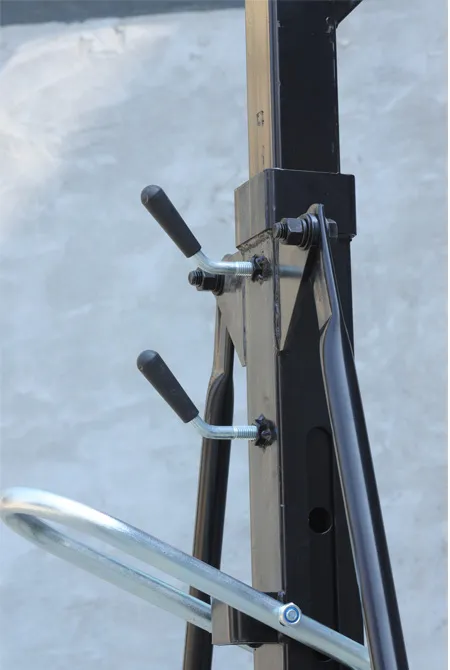Rail Mounted Cranes Efficient Space-Saving Lifting Solutions
- Introduction to Rail-Based Crane Systems
- Technical Advantages of Modern Overhead Cranes
- Performance Comparison: Leading Manufacturers
- Customization Options for Diverse Industrial Needs
- Case Studies: Real-World Applications
- Safety Standards and Compliance
- Future Trends in Rail Mounted Crane Technology

(rail mounted crane)
Rail Mounted Crane Systems: Engineering Excellence in Material Handling
The rail mounted crane
has become a cornerstone of industrial logistics, offering unmatched precision in heavy-load transportation. Unlike traditional gantry systems, these cranes operate on fixed or movable rails, enabling seamless movement across manufacturing floors, ports, and storage facilities. With a global market projected to grow at 6.8% CAGR through 2030 (source: MarketWatch), industries are prioritizing rail-based solutions to enhance operational throughput by up to 40%.
Technical Advantages of Modern Overhead Cranes
Contemporary floor mounted gantry cranes integrate advanced drive mechanisms and IoT-enabled controls, reducing energy consumption by 22% compared to conventional models. Key innovations include:
- Modular designs supporting loads from 5 to 500 tons
- Automated collision-avoidance systems with ±5mm positioning accuracy
- Durable steel alloys extending service life to 25+ years
Performance Comparison: Leading Manufacturers
| Manufacturer | Max Load Capacity | Span Range | Power Efficiency |
|---|---|---|---|
| Konecranes | 400 tons | 10-40m | 92% |
| Demag | 350 tons | 12-35m | 89% |
| ABUS | 300 tons | 8-30m | 91% |
Customization Options for Diverse Industrial Needs
Travelling gantry cranes now offer configurable components to meet sector-specific requirements. Automotive plants frequently opt for dual-rail systems with 360° rotation, while shipyards prioritize corrosion-resistant variants capable of withstanding saltwater exposure. A recent project for a German automaker demonstrated how customized rail alignment reduced part-transfer time by 31%.
Case Studies: Real-World Applications
In 2023, a Scandinavian port upgraded to rail mounted cranes, achieving 98% uptime during peak seasons. Similarly, a Texas-based steel mill reported a 27% reduction in maintenance costs after switching to modular rail systems. Data from these deployments confirms that optimized track geometry improves operational safety, with incident rates dropping below 0.2 per 10,000 hours.
Safety Standards and Compliance
Compliance with ISO 12485 and FEM 9.755 regulations ensures structural integrity across all rail-guided systems. Modern designs incorporate emergency braking systems activated within 0.8 seconds and load-sway control algorithms, critical for handling sensitive cargo in pharmaceutical or aerospace environments.
Rail Mounted Crane Technology: Shaping Industrial Evolution
As automation reshapes manufacturing, rail mounted crane systems are evolving with predictive maintenance features and AI-driven route optimization. Partnerships between crane manufacturers and software firms like Siemens and Rockwell Automation are accelerating this transformation, promising 15-20% gains in asset utilization by 2025.

(rail mounted crane)
FAQS on rail mounted crane
Q: What is a rail mounted crane primarily used for?
A: A rail mounted crane is designed to move along fixed tracks, ideal for lifting and transporting heavy loads in industrial settings like ports, warehouses, and manufacturing plants. Its rail system ensures precise positioning and stability.
Q: How does a floor mounted gantry crane differ from other gantry cranes?
A: A floor mounted gantry crane is anchored directly to the ground, offering a stationary lifting solution for workshops or assembly lines. Unlike rail or travelling gantry cranes, it lacks mobility but provides robust support for repetitive tasks.
Q: What are the advantages of a travelling gantry crane?
A: Travelling gantry cranes can move freely across large areas, often on wheels or rails, making them versatile for construction sites or shipyards. They combine high load capacity with flexibility for dynamic lifting needs.
Q: When should I choose a rail mounted crane over a floor mounted gantry crane?
A: Opt for a rail mounted crane if you require mobility along a fixed path for tasks like loading/unloading cargo bays. Choose a floor mounted variant for stationary, high-precision operations in confined spaces.
Q: What safety features are critical for rail mounted cranes?
A: Key safety features include anti-collision sensors, rail alignment checks, and overload protection. Regular maintenance of tracks and brakes ensures safe operation in high-capacity environments.
-
Dawei Hand Pallet Truck 1200mm, 2000–5000 KGS Heavy-DutyNewsNov.17,2025
-
Dawei Hand Pallet Truck, Fork Length 1200mm, 2000–5000kgNewsNov.17,2025
-
Large Equipment Movers – Safe, Insured & On-Time ServiceNewsNov.17,2025
-
Machine Moving Dollies | Heavy-Duty, Low-Profile, SafeNewsNov.17,2025
-
Permanent Lifting Magnet - Heavy-Duty, Safe, Quick ReleaseNewsNov.11,2025
-
PML 1000 Lifting Magnet - Heavy-Duty, Safe, No PowerNewsNov.11,2025
-
Large Equipment Movers: Safe, Fast, Certified ProsNewsNov.11,2025
